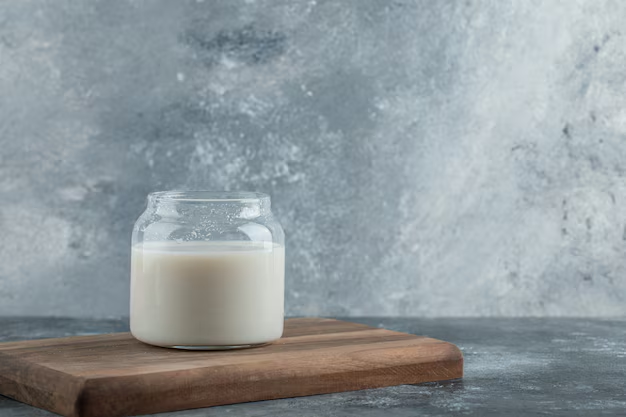How Long Is It Safe to Leave Mayonnaise Out of the Refrigerator?
Mayonnaise is a staple in many households, a creamy companion to countless dishes from sandwiches to salads. Yet, its storage often raises questions, primarily concerning how long it can be safely left out at room temperature. Let's delve into the considerations of mayonnaise safety, offering practical advice and exploring the factors that influence its shelf life.
🛒 Understanding Mayonnaise: Composition & Characteristics
Mayonnaise is an emulsion, typically made from eggs, oil, and vinegar or lemon juice. Its composition is crucial to understanding its storage requirements.
What Makes Mayonnaise Perishable?
- Egg Content: Traditional mayonnaise includes raw or partially cooked eggs, which are susceptible to bacterial growth when not stored correctly.
- Acidic Nature: Ingredients like vinegar and lemon juice add acidity, which can inhibit bacterial growth to some extent, offering a measure of preservation.
- Oil Base: While oil itself doesn’t spoil easily, it contributes to the emulsion's texture, which can break down if improperly stored.
Store-Bought vs. Homemade
- Store-Bought: Often contains preservatives that extend shelf life, both open and unopened. It’s pasteurized, reducing the risk of salmonella from eggs.
- Homemade: Lacks preservatives, making it more prone to spoilage and suitable for refrigeration right from the start.
🥚 How Long Can Mayonnaise Be Left Out?
Leaving mayonnaise out of the fridge is not recommended for extended periods. Both safety and quality degradation become major concerns.
General Guidelines
- Two-Hour Rule: As a general rule, perishable foods, including mayonnaise, should not remain unrefrigerated for more than two hours. This time reduces to one hour in environments above 90°F (32°C).
- Impact of Temperature: Warmer temperatures accelerate bacterial growth. When in doubt, follow the "when in doubt, throw it out" mantra.
Risks of Mayonnaise Left Out
- Bacterial Growth: Room temperature can promote the growth of bacteria such as Salmonella or E. coli, particularly in mayonnaise containing eggs.
- Spoilage: Once mayonnaise reaches a certain temperature and time threshold, spoilage is imminent.
🍴 Best Practices for Storing Mayonnaise
To maximize mayonnaise’s shelf life and ensure safety, consider these storage tips:
In the Refrigerator
- Store Consistently: Always refrigerate mayonnaise after opening. Store-bought versions remain fresh for 2-3 months post-opening when kept cool.
- Air-tight Containers: Prevent contamination by sealing tightly. Avoid storing mayonnaise in the door where temperature fluctuates more.
- Check Expiry Dates: Adhere to use-by dates. Remember that exposure to room temperatures can diminish the expiry timing noted on packaging.
For Homemade Mayonnaise
- Immediate Refrigeration: Store immediately after preparation in a clean, airtight container.
- Short Shelf Life: Typically lasts up to a week in the refrigerator, so prepare batches accordingly to avoid wastage.
🍽️ Serving Tips to Reduce Risks
Minimizing the risk during serving can further safeguard your mayonnaise's integrity.
- Use Clean Utensils: Dip with clean utensils each time to prevent cross-contamination.
- Keep Cool During Serving: If serving outdoors, consider placing mayonnaise over ice or using insulated serving containers.
- Monitor Time: Set a reminder to ensure mayonnaise isn’t left out over the recommended duration.
🛠️ What To Do If Mayonnaise Was Left Out
Accidents happen, and sometimes mayonnaise might be left out unintentionally. Here’s how to handle it:
Signs of Spoilage
- Changes in Texture: Discard if the mayonnaise appears separated, oily, or gritty.
- Off Odors: A sour or off smell indicates spoilage.
- Mold Presence: Visible mold is a definite sign to toss it out.
Action Steps
- If in Doubt, Throw It Out: Don’t taste test risky mayonnaise. The potential for foodborne illness isn’t worth the gamble.
- Prevention for Next Time: Set timers or make a kitchen routine to help store it promptly.
🔄 Related Considerations in Food Storage
With the guidelines above, consider broader food storage practices to ensure overall kitchen safety:
Temperature Awareness
- Fridge Calibration: Ensure your refrigerator is set at or below 40°F (4°C) to effectively slow bacterial growth.
- Freezer Overflow: Keep your freezer organized and not overloaded to maintain consistent cold temperatures.
Cross-Contamination Prevention
- Separate Raw Ingredients: Avoid placing raw meats and unwashed produce near any condiments.
- Regular Cleaning: Wipe down fridge shelves and containers regularly to minimize bacteria and mold risks.
📌 Quick Reference: Mayonnaise Storage & Safety Tips
Here’s a handy, skimmable list of key takeaways for maintaining mayonnaise safety and quality:
- ❄️ Always refrigerate mayonnaise after opening.
- ⏰ Adhere to the two-hour rule (one hour above 90°F).
- 🔄 When in doubt, throw it out! Spoiled mayonnaise isn’t worth the risk.
- 🥄 Use clean utensils to serve to prevent contamination.
- 🥶 Store at or below 40°F (4°C) for optimal shelf life.
- 🕒 Regularly check and abide by expiration dates, especially for homemade varieties.
Understanding mayonnaise’s nature and storage requirements empowers you to enjoy this versatile staple safely. By adhering to food safety guidelines, you can keep your meals delicious and free of risk. Practicing proactive steps doesn’t just apply to mayonnaise but is a valuable habit across all kitchen and food preparation activities.
